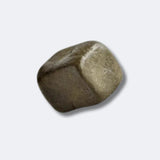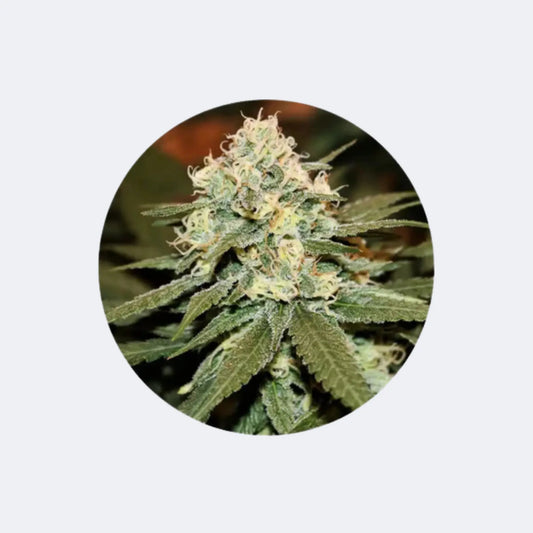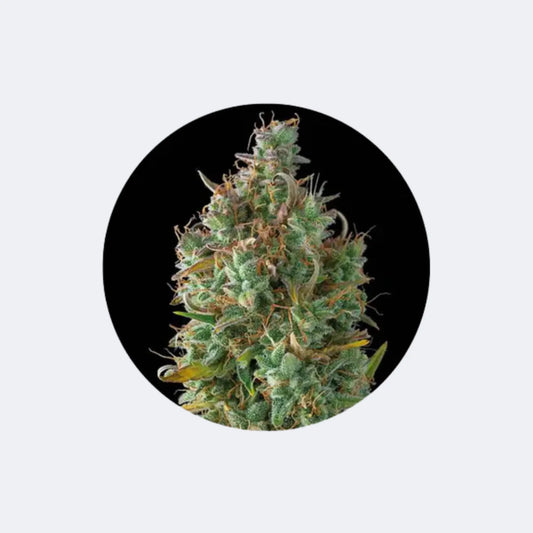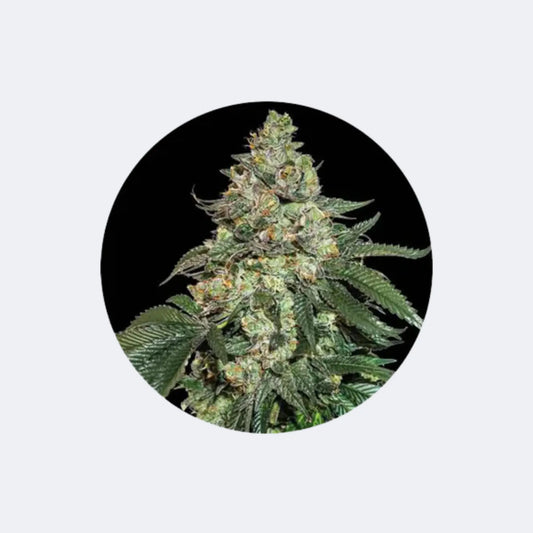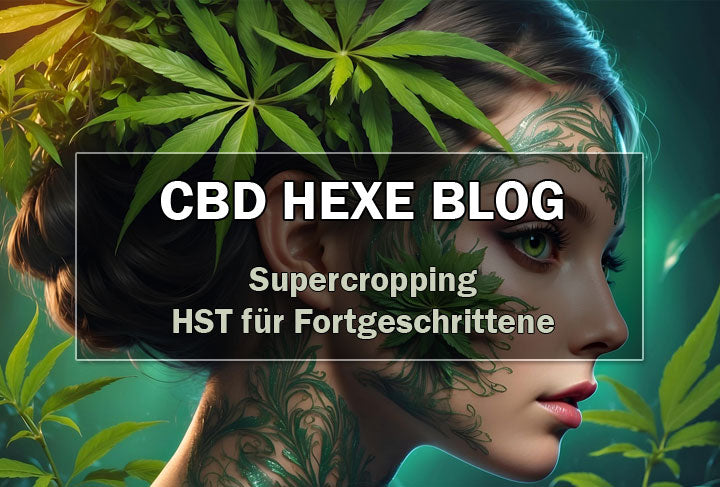
Supercropping (HST for advanced users)
Andreas LeschkeShare blog post
Become your weed lady's bonebreaker and watch the magic
The previous training methods that I have presented here as a blogger for CBD-HEXE were primarily intended to increase the pure yield.
However, WITHOUT massively influencing the concentration of THC and terpenes.
And this is exactly where the first big difference lies between the training methods discussed so far and "supercropping"!
Thus, the advanced gardener, who trains his plants as a bone-breaker, is not only able to increase the final yield through targeted cropping, but also, in an almost magical way, massively increases the production of terpenes and cannabinoids, which, due to a hormonal reaction of the injured plant, causes more "magic powder" to appear on the buds.
To put it bluntly, "supercropping" massively boosts the THC and terpene content of our beloved flowers! If used correctly, you'll get buds that reach a whole new level, both aromatically and in terms of potency.
Properly implementing "supercropping" requires patience, experience, sensitivity, and training. It's therefore not an HST method that can be classified as easy; it's more suitable for professionals and advanced growers who want to try something new, alongside the simpler HST & LST training methods, to push their plants to a whole new level.
Nevertheless, the targeted breaking of branches and trunks can be learned by anyone who takes the time to understand what we want to trigger through "supercropping" so that the plant can "save" the broken branches or trunks and not reject them.
Therefore, I would personally advise inexperienced and new cannabis growers to test supercropping on less important branches in the lower area at the beginning before tackling the important branches.
Each plant offers enough branches in the lower third to practice on, allowing you to observe whether the plant was able to salvage the broken branch. This way, anyone can learn before attempting the important branches and trunks that are truly worth trimming.

Requirements for supercropping
Supercropping is one of the few training methods for which automatic strains are unsuitable due to their limited life cycle, as growth is guaranteed to stop for 5-7 days after cropping. Unfortunately, the limited life cycle of automatic strains does not allow for growth losses, as this leads to yield losses. At least, this applies to supercropping during the vegetative phase. Those who want to crop during the flowering phase don't mind, as both automatic strains and photoperiod strains have the same life cycle limitations during the flowering period.
Supercropping is usually recommended for cannabis plants during the vegetative phase, although in my opinion it also makes sense during the flowering phase, for example when branches or the trunk need to be bent to optimize the light, but the plant has become too stable for LST.
However, the length of the flowering phase also plays a major role. Those who choose a strain with a 12-week flowering period can better tolerate the 5-7 days of supercropping recovery than those with a strain that only flowers for 7-8.
First, you should ensure that the plant isn't showing any signs of stress or deficiency. Supercropping is by far the most stressful HST method you can subject your plant to.
For this reason, it is important to ensure that the pH value is in the correct range and that the plant has sufficient nutrients available to recover.
The plant should already have developed three to four nodes (nodes) for the first supercropping. During this phase, the main stem can be broken to achieve flat growth, but this will cause a greater hormone boost in the plant than during LST.
Branches, shoots or twigs are subject to roughly the same rule:
When these 3 nodes or a length of at least 12 cm have been reached, cropping is possible.
With supercropping, we bring our plant right to the brink between life and death, thereby challenging the cannabis plant's will to survive to its limits. This massive will to survive will cause the plant, as soon as it senses that its life is in danger, to begin sending massive amounts of nutrients to the fracture site, boosting its growth hormone release for regeneration and healing, and directing all its energy toward growing more robustly and vigorously on that branch/trunk in the future to prevent further damage.
Planning and implementation of supercropping
Supercropping serves several purposes. In addition to the hormonal boost achieved by selectively cropping stems and branches, it also allows us to shape the plant, similar to LST, to better adapt our cannabis lady to light.
Therefore, it is advisable to first think not only about which shoots on the plant should be broken/bent, but also in which direction it should go so that the cropped branch or trunk receives unhindered light, but also does not take light away from other shoots.
If done correctly, the weed lady needs between 5-7 days to recover after supercropping. Only then will she resume growth. For this reason alone, I would advise cannabis growers to wait until their plants are 6-8 weeks old before cropping.
In this phase, enough shoots or branches have already formed that are worth cropping and you can better assess in which direction to direct the shoots so that they receive unhindered light and can develop more productively.
The implementation of supercropping
Before I describe how to implement supercropping, I would first like to point out that careless gardeners often accidentally break a branch, causing it to bend over.
Unlike supercropping, this can also result in external injury to the shoot, creating an open wound. When this happened to me, I didn't remove the shoot, but instead isolated the open wound with a bandage and stabilized the branch at the break point.
By gently fixing the accidentally open break, these branches usually recovered and gave me wonderful blossoms.
From my experience, I can only advise anyone who accidentally experiences something like this not to give up on the urge, but to stabilize it with a plaster to save it.
Cannabis is not only a wonderful medicinal and fun plant, but above all a survival queen in the world of plants, possessing a self-healing potential that other living beings can only dream of and marvel at.
In contrast to accidentally broken and snapped shoots, which are usually also damaged on the outer shell, with supercropping we want to inflict ONLY internal injuries to the shoot so that the outer shell remains intact.
The idea is to cause small, targeted micro-fractures at one point inside the branch in order to deprive the branch of its stability at that point, so that it can bend without causing cracks or breaks in the outer shell.
It's a good idea to have some bandages handy in case something goes wrong during supercropping and the outer sheath is damaged, to save the shoot. I also advise against wearing gloves, as this requires absolute tactile sensitivity and finesse.
To do this, we first select the shoots we want to crop. Make sure you can work comfortably so you have the patience and calmness needed to do it right.
To trim a branch, we take it close to the main stem (this is necessary so that the nutrients reach the break point as quickly as possible) between the thumb, index finger and middle finger and massage it with a light pressure of the thumb, which slowly moves up and down between the index and middle fingers, so that we turn the branch slightly back and forth.
With a little time and patience, the branch will become increasingly unstable at this point until a faint cracking sound is audible. At this point, we've already achieved our goal and simply need to slowly and carefully bend the branch in the desired direction, then secure it at the bottom of the pot with some plant rope or wire so it can continue growing in the desired position.
If the outer covering is accidentally damaged during cropping, I recommend isolating the break with a bandage to stabilize the shoot somewhat. In this case, please DO NOT bend the branch or shoot, but stabilize it so that it can return to its original position. The bandage should therefore be tightly and tightly secured around the break.
If the shoot were to be bent despite external injuries, there is a risk that the nutrient supply at the break point would be interrupted.
Anyone who has successfully broken their stems in such a way that they only have internal injuries and can be bent carefully but effortlessly will notice after a recovery period of 5 to 7 days that the plants grow more robustly and faster on the cropped branches/shoots than before.
By selectively cropping upper shoots so that they no longer shade the shoots below, the lower parts of the plant can also be used more productively. This not only increases the yield of the cropped branches or stems, but also serves as a training method for bringing overshadowed shoots back into the light.
I hope you have fun experimenting, and if you've never tried it before, I can only advise you to practice on unimportant branches.
Because this HST method is multifunctional:
Cropped branches produce larger buds with a higher cannabinoid and terpene concentration than uncropped branches
Shady areas of the plant are exposed again, making them more productive.
Space optimization for home growing. Cropping allows for better control of the plant's height and width, allowing for more effective use of light and the grow box.
We thank the author Jorge Rieger for this blog post on "Supercropping (HST for Advanced Users)." Feel free to follow him on his Facebook account. --> Click here

